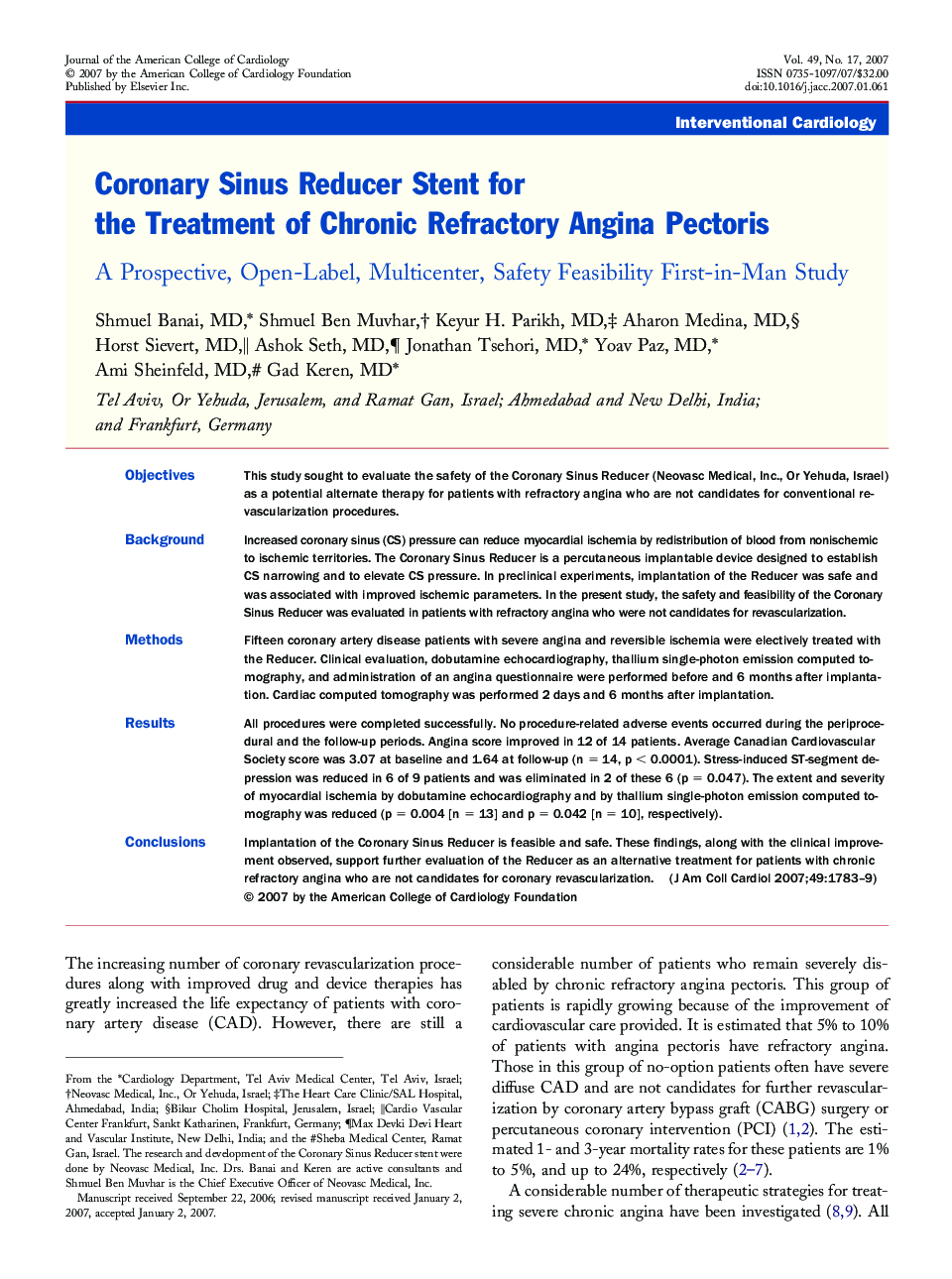| Article ID | Journal | Published Year | Pages | File Type |
|---|---|---|---|---|
| 2951550 | Journal of the American College of Cardiology | 2007 | 7 Pages |
ObjectivesThis study sought to evaluate the safety of the Coronary Sinus Reducer (Neovasc Medical, Inc., Or Yehuda, Israel) as a potential alternate therapy for patients with refractory angina who are not candidates for conventional revascularization procedures.BackgroundIncreased coronary sinus (CS) pressure can reduce myocardial ischemia by redistribution of blood from nonischemic to ischemic territories. The Coronary Sinus Reducer is a percutaneous implantable device designed to establish CS narrowing and to elevate CS pressure. In preclinical experiments, implantation of the Reducer was safe and was associated with improved ischemic parameters. In the present study, the safety and feasibility of the Coronary Sinus Reducer was evaluated in patients with refractory angina who were not candidates for revascularization.MethodsFifteen coronary artery disease patients with severe angina and reversible ischemia were electively treated with the Reducer. Clinical evaluation, dobutamine echocardiography, thallium single-photon emission computed tomography, and administration of an angina questionnaire were performed before and 6 months after implantation. Cardiac computed tomography was performed 2 days and 6 months after implantation.ResultsAll procedures were completed successfully. No procedure-related adverse events occurred during the periprocedural and the follow-up periods. Angina score improved in 12 of 14 patients. Average Canadian Cardiovascular Society score was 3.07 at baseline and 1.64 at follow-up (n = 14, p < 0.0001). Stress-induced ST-segment depression was reduced in 6 of 9 patients and was eliminated in 2 of these 6 (p = 0.047). The extent and severity of myocardial ischemia by dobutamine echocardiography and by thallium single-photon emission computed tomography was reduced (p = 0.004 [n = 13] and p = 0.042 [n = 10], respectively).ConclusionsImplantation of the Coronary Sinus Reducer is feasible and safe. These findings, along with the clinical improvement observed, support further evaluation of the Reducer as an alternative treatment for patients with chronic refractory angina who are not candidates for coronary revascularization.
